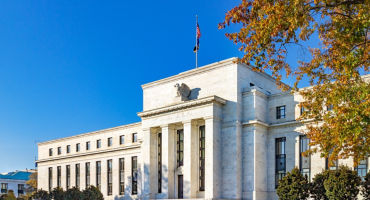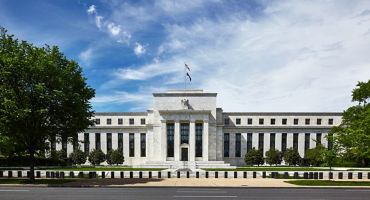As is customary for this time of the year, I’ve been spending some time speaking with clients from across the UK about the outlook for 2024. The usual themes were prevalent. Like us, clients are asking what the outlook for growth and central bank policy might be. What are the right asset class choices? Are equity valuations stretched? And perhaps most crucially, is inflation past its peak?
What struck me most was the question around inflation. The markets are strongly focused on the impact of disinflationary pressures, such as falling food and manufacturing input prices and an easing of wage growth. Yet on the other hand, many market participants believe we will see structurally higher inflation over the long term. This tension between the near-term and long-term outlook for inflation presents significant challenges for asset allocators in 2024.
This is particularly relevant as investors undertake their ritual start-of-year reassessment of the asset allocation mix. The debate around inflation continues to influence their stance around fixed income allocations. At face value, the case for fixed income is compelling. Growth is weakening, albeit with significant regional dispersion. Developed market inflation continues to fall markedly. In the UK, headline inflation has fallen from a peak of 11% in October 2022 to 4% in December. From a valuation perspective, starting yields across the risk spectrum are attractive and while credit spreads remain tight, all-in yields should offer a significant cushion against spread widening from here.
But despite the constructive set-up, investors largely remain unconvinced. Why?
We think there are three key factors at play:
- The damage that high inflation caused to multi-asset investors in 2022 will remain front of mind. I expect a high sensitivity — whether warranted or not — to inflation will remain for the coming years. Investors are often sensitive to recent events, as we witnessed in the post-GFC era, where investors remained highly wary of the risk of another credit crisis.
- In the near term, the path back to central bank inflation targets is unlikely to be smooth. This may prompt many investors to hold back on duration overweights on the expectation of better entry levels.
- The secular view around inflation remains uncertain. Many argue that the forces that kept inflation at bay in recent decades have been replaced with a new set of secular forces that will keep inflation higher and more volatile over the coming years.
Is inflation gone or will it stay higher for longer?
The “higher-for-longer” view may be hard to square with the fact that inflation has already fallen much quicker than most expected, driven largely by falling goods and energy prices. We expect this disinflation trend to continue over the coming quarters as central bank policy remains tight, growth slows and labour markets soften. While services inflation remains sticky, wage growth is slowing and housing inputs, mainly via rents, are showing signs of moderating. However, there are convincing reasons why inflation should be higher and more volatile going forward. Given secular geopolitical trends, we expect a move away from globalisation towards regionalisation, which is likely to reduce efficiency within supply chains and push up costs. The energy transition has already shown its impact on supply and demand dynamics in commodity markets and while the pace of decarbonisation and the mitigating impact of technology remains uncertain, at the very least the path for commodity prices should be more volatile going forward. What complicates the implications for asset allocation is that without a clear near-term catalyst or an ability to quantify these secular risks, it is challenging to incorporate a secularly higher view of inflation into near-term asset allocation preferences in the face of significant cyclical disinflationary pressures.
Over the coming quarters, disinflationary forces look set to remain strong and, short of some kind of unforeseen geopolitical event or a reacceleration in underlying inflationary pressures, the direction of travel for developed market inflation into the end of the year should be lower, even if core inflation remains above central bank targets for some time. To my mind, anything sustainably below 3% core CPI would be enough to remove some of the uncertainty and volatility in risk-free rates that has plagued asset allocators over the last two years. This is a world in which a more normal correlation relationship between equities and bonds can reassert itself, but that relationship is likely to be weaker than in the previous cycle owing to heightened inflation risk.
What are the implications for asset allocation?
Cash had an effective but short-lived reign as king of the asset classes. Given the generational reset for multi-asset investors in 2022, and a likely fall in short-term interest rates over the coming year (barring any surprises on inflation) the set-up for risk assets versus cash for long-term investors is constructive.
An active asset allocation approach can help investors smooth the path of returns. The amount of risk investors should take in asset allocation timing depends on their time horizon and risk tolerance but deploying cash allocations gradually into traditional asset classes such as fixed income and equities through periods of market volatility can help investors manage risk while deploying cash. Higher starting yields mean that investors don’t need to get too creative about seeking returns from the defensive bucket within portfolios, and for the growth bucket, while spots of the market appear fully valued, global equity valuations are not wildly expensive.
This is not to say that investors should ignore potentially disruptive structural forces. Inflation may well raise its head again over the coming years but without defined catalysts and timelines, I think investors should approach these risks with moderately sized strategic allocations to areas such as real assets and inflation-sensitive parts of the equity market, which can help ride out inflation-induced volatility.
Facing the inflation dilemma head on
Time in the market beats timing the market for most investor types. Those waiting for the all-clear on inflation might be waiting a long time or miss the proverbial boat as markets adjust quickly. By firmly embedding diversification into their strategic asset allocation, investors can face the inflation dilemma head on with a well-diversified portfolio, rather than waiting for the perfect entry point that may never come.






















